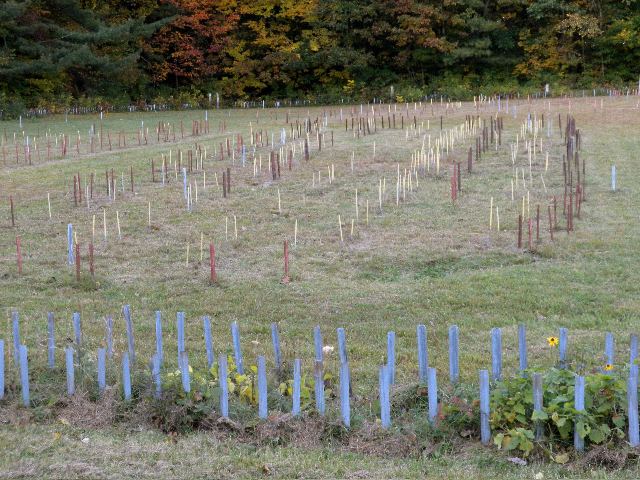NRHP Reference # 73001207 Phone +1 518-853-3845 | Built 1666 (or 1679) Area 55 ha Added to NRHP 28 August 1973 | |
 | ||
Address 3636 NY-5, Fonda, NY 12068, USA Similar Fonda Reformed Church, Town of Mohawk, Montgom County Social Se, Montgom County Court, Our Lady of Martyrs Shrine | ||
Caughnawaga Indian Village Site (also known as the Veeder site) is an archaeological site located just west of Fonda in Montgomery County, New York. The location of a former Mohawk nation village, the site was discovered in 1950 by Rev. Thomas Grassmann. It is the only completely excavated Iroquois village in the country.
Contents
Description
The Mohawk village site has been marked with stakes to show the outlines of the 12 longhouses and stockade that were built there 300 years ago. The entire site is open to the public, so people may walk around the former village and see the foundations of the Caughnawaga longhouses and the layout. The site is on a hill. The archeological site was listed on the National Register of Historic Places in 1973.
Below it have been constructed the Mohawk-Caughnawaga museum and the National Shrine of Blessed Kateri Tekakwitha, canonized in the 20th century as the first Native American saint in the Roman Catholic Church.
The name Caughnawaga is derived from the Mohawk word kahnawà:ke, meaning "place of the rapids", referring to the rapids of the Mohawk River.
It is also known as Indian Castle, or Gandaouage; or Kachnawage in Mohawk, meaning "castle" or "fortified place." This village with its defensive palisade was the Native American form of a castle. The site overlooks the Mohawk River and is also close to a natural spring.
History
Caughnawaga was occupied by the Mohawk from 1666 to 1693. French Jesuits established a mission there, which operated for about 10 years ranging from 1668 to 1679; they taught some of the Mohawk to read and write in French, as well as teaching them about Christianity. It is now believed that the village known as "Caughnawaga" was located upstream at the "Fox Farm site" until 1679, at which time it moved to this location. Snow gives a population estimate of around 300 people, fewer than had lived at the Fox Farm site due to the departure of the Catholic Mohawks to Canada by 1679.
The site is now a center for recreation and culture.
